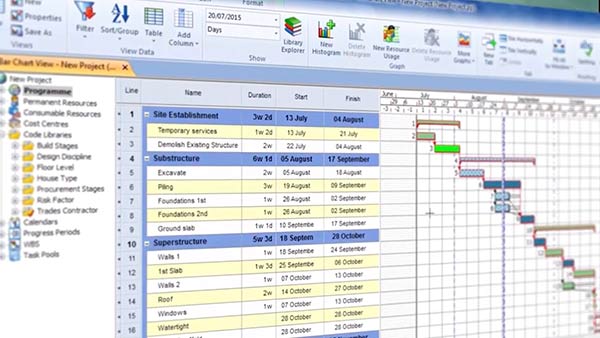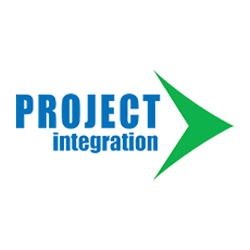Based on outreach by customers regarding how to best handle the COVID-19 situation from a schedule / cost delay and risk management perspective, we have put together a “near term” action plan. This action plan is designed for stakeholders to start thinking about schedule risk management in order to get ahead of the mounting risk of delay and disruption that may start to impact the Construction industry. Qualified resources to analyze and oversee delays and impacts on projects will be scarce for the foreseeable future and will put a strain on construction teams. The better prepared and documented your projects are, the more successful your company can be. Below are steps to prepare your companies to document and understand the impacts on your existing projects.
These steps should be started now and can be completed remotely to prepare your companies for the coming impacts and current and future analysis. Each project needs to make a new baseline for 2020 and then update and analyze the project schedules for impact in the future. Some of the major impacts to consider immediately will be material/supply chain delays, lack of resources, cash flow issues, subcontractor / vendor defaults, work stoppages.

Projects will likely be impacted in different ways, while some may not be impacted at all. Understanding the potential risks on each project is a great place to start. An analysis by project looking at the Subcontractors being used, the vendors that will be supplying materials/equipment, resources availability by the designers/engineers, field personnel and inspectors should be analyzed and assessed.
Work with the teams to create a comprehensive list of risk issues that are anticipated to potentially impact your projects. Some of the major impacts to consider immediately will be material/supply chain delays, lack of resources, cash flow issues, subcontractor / vendor defaults, work stoppages.
Create a spreadsheet that lists all your current projects including key project information: Project name, Contract value, Contractual completion date, and Scheduled completion date as of end of Feb 2020. In addition, create a column for each risk issue that the current situation presents.
Conduct phone interviews with PM’s and Superintendents to determine which risks are present on each job. For each project, discuss each risk issue and assign a “risk score” for each risk issue in the Risk Matrix.
Money will be lost in the next couple of months and it will be coming out of the pockets of the contractors initially. Therefore, time is of the essence for Owners and Contractors to get on the same page of which entities are responsible to cover which impact/delay costs as a result of the current crisis. Otherwise there could be unanticipated cash flow issues and defaults because the parties aren’t on the same page. Below are the most relevant clauses to seek out:
In addition to all of this, Owners and Contractors should evaluate whether or not any existing insurance policies provide coverage. Applicable policies that should be reviewed include Builders Risk, Business Interruption, Subcontractor Default, Supply Chain Risk, etc.
It is recommended that each entity prepare and distribute a document foreach project that clearly outlines the clauses and insurance vehicles believed to be relevant to each respective project. Distribute this document to your project teams so that they understand the contracts and the relevant terms related to managing through this situation. Also, it is typical in most contracts that full analytical and evidentiary support will be required to receive any sort of compensation for damages due to these issues.

It is vital to get an understanding of the status of the job at the time of the impact because this will serve as the baseline of all delay and disruption analyses going forward. The updated schedule needs to be an accurate depiction of the current state of the project. It will show what scope is completed, what work scope is remaining with the planned sequence (logic) for remaining work at this point in time as it will be the baseline for comparison purposes.
In order to properly status the projects, three things need to happen:
This is extremely important. Somebody needs to verify that the status of the schedule and tasks contained within, aligns with the amount of work in place. This will serve as the baseline for future analysis; so, it is important that the data is not compromised at the beginning. This can be completed by visiting the site and confirming the accuracy in person, studying job site videos and photos. In the end, the project team needs to take ownership of the schedule and understand the significance and importance for utilizing the project schedule for planning and documenting the work scope.
It is very important to confirm that the schedule is set up using best practices. This means that the schedule contains enough logic and enough detail to be both “reactive” to delays and be effective in its use. Missing logic ties, constraints, high durations, and open ends, all result in schedules that are misleading and ineffective. This is because critical paths are likely incorrect and justifying impacts to the schedule are therefore incorrect too.
Since many projects are being impacted midstream, it is important to confirm that the plan at the time of the impact is feasible. This is important to both Owners and Contractors. If the schedule is not accurately reflecting an achievable plan, then it isn’t reliable and therefore should not be used as the “basis for analysis”. Some schedules are overly compressed midway through the project, consuming months of delays that already occurred before the current crisis. An overly compressed schedule that is essentially consuming/recovering/hiding months of delays will likely result in more confusion and disputes down the road. We highly recommend that an overly compressed schedules get addressed at this time showing the realistic estimate to complete. All previous delay issues need to be addressed at this time as part of this process.
The above steps will take time and commitment to get it accurate. It is in the best interest of all stakeholders to ensure that the schedule management process is defined and that each team is following best practices from here on out to effectively manage the risks, delays, and claims that are likely coming on most projects worldwide.

The previous steps were all precursors to the most important step of all – set up and execute upon a delay and disruption monitoring protocol for all your projects. How well delays are documented, analyzed and understood in the upcoming months will be highly correlated to the level of success achieved on each respective project from both a cost and schedule standpoint. In addition, these things are highly correlated to the strength of relationships with your construction counterparts involved in these projects. So, it is time to step it up when it comes to schedule delay and impact management and analysis. Below are some recommendations in developing this process:
Different companies track delays indifferent ways. Different types of delays should be tracked in different ways. Given the situation and the different ways that projects will be impacted, it is important to establish up front how you intend to track delay in each risk category. Sending notifications will be key, followed by tracking the delays and sending updates to stakeholders.
It is recommended that consistent codes are created within the schedule that align with the various risk categories outlined in each project’s respective risk matrix. It is important to do this because each risk issue may be handled differently from the contract’s perspective for an extension of time, compensation and damages quantification on each respective project. It is important to be able to analyze impacts in a manner that isolates the impacts into potential risk and damage categories, so that quantification of damage scan be rather straightforward without being muddled by other impacts. This will decrease the risk of disputes down the road.
Major milestones are going to be delayed, subcontractors are going to be impacted on projects. Therefore, it is imperative to set up schedules to analyze delays to every milestone that ties to Liquidated Damages and every major subcontractor category.
Once the process has been thought through, all parties need to come together and agree on it. The last thing that is needed is a lot of effort going into a process that not all parties have agreed on -specifically Owner and Contractor.
With the ever-changing situation, this type of analysis and the discussions around it need to be had early and often. At a minimum,I recommend a monthly delay and disruption meeting so that all parties understand the impacts to the schedule.
Given the current situation and based on years of experience of helping people in delay crisis mode on their projects, Project Integration highly recommends the action plan outlined above as a starting point for construction stakeholders to manage through this process as effectively as they can.
The COVID-19 impact will present ever-changing issues and impacts in the coming months. Documentation and communication between all parties will help minimize the uncertainty that will definitely impact your projects. The less unnecessary spending on litigation, the better the industry will be. There will be more money amongst the participants and better relationships in the long term.
Everyone will likely be impacted on some of their projects all simultaneously. Owners will not receive their buildings on time and revenue will be impacted – in more ways than just the construction side. Contractors will have project management teams to pay and indirect costs to consume in the near term resulting in a cash crunch. Subcontractors will be pulled in many directions and may become stretched too thin and productivity may suffer as a result. Make sure your company is documenting the impacts in the schedule and providing written notification to the owners.


We have helping our clients over the last 30 years with successfully planning and scheduling construction projects. We understand how to assist companies throughout the Initiation, Planning, Executing and Controlling phases of the construction lifecycle utilizing Elecosoft Powerproject and Oracle Primavera to help meet our clients’ needs.
Please contact us if you would like to setup an online session to discuss the steps above or to train the project team on documenting in the schedule. Please make sure to make a baseline of the updated project schedule before inputting impacts.